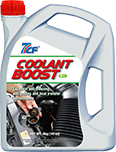If the walls of your home are moldy, yellow, or have ugly graffiti, you can renovate them with the DIY wall repair spray paint on the walls. Spraying it on the dirty parts will restore the walls to their original appearance. Or change the wall to a color you like very much by using the repair spray paint, which is really very convenient.
The content of the DIY wall repair spray paint is water-based paint, which uses water as the medium. Water-based paint is diluted with water, the content of harmful substances such as benzene and free TDI is relatively low, and there is no pungent odor.
Performance: The water-based formula is safe and environmentally friendly, with strong adhesion, and good covering power, and it is not easy to fall off paint.
Color (paint film and fullness, color): The paint film is fine, not dry, and the paint film effect is better.
Drying speed: The drying speed is fast, and the moisture of the DIY wall repair spray paint evaporates quickly, so the surface dries quickly, which is convenient for rapid construction.
Applicable objects: The advantages are non-toxic and tasteless, high environmental protection, safe for storage and use, suitable for renovation and color change of wall and gypsum decoration in daily life, simple and convenient.
Shenzhen Sunrise New Energy Co., Ltd is one of the leading spray paint manufacturers in the world. We want to introduce you some precautions for this product. Before applying the DIY wall repair spray paint on the wall, shake the bottle repeatedly to fully stir the acrylic inside the self-spraying paint. During the self-painting process, a distance of about 20 cm should be maintained. If the distance is too close, bubbles and accumulations will easily occur. If the distance is too far, the spray paint will be wasted. Pay attention to dust, dust, and other pollution during spraying, and small insects often cause trouble. Pay attention to the ambient temperature and humidity to prevent exposure to sunlight, low temperature, and dry environment. When using self-spraying paint, pay attention to continuing to spray a few minutes after the last time, and repeat several times.
(1) Move the small movable furniture indoors to another space.
(2) For large items that cannot be moved, try to concentrate them in the middle of the room and cover them with plastic protective film, old newspapers, or old curtains.
(3) The door should be wrapped with plastic film, and the decorations on the wall should be taken off.
(4) The edge of the door frame and window frame should be pasted with textured paper to avoid being stained with paint.
(5) The floor can be covered with plastic protective film and old newspapers to avoid getting dirty.
(6) Before starting to use the DIY wall repair spray paint on the wall, repair and polish the wall, and use putty powder (putty powder mixed with water to make a toothpaste-like substance) to repair the holes, damaged parts, large cracks, and dry lines on the wall. Sand the wall with sandpaper, smooth the repaired position, clean the stains on the wall, and gently sweep off the floating ash on the wall.
If you want to renovate the wall (for example, you are not satisfied with the color of the wall that has been painted, or you want to repaint it after a long time), you must first wipe the wall with a sponge or a rag and look at the wall, by the way, to check whether there has been painted peeling. If there is, it must be filled with primer materials such as putty powder. If the original paint surface is smooth, it must be sanded first, which can strengthen the adhesion of the new paint film. However, this sanding does not require you to run as hard as you do with other furniture, and just a little treatment is needed.
Contact Us
 English
English  Español
Español  日本語
日本語  한국어
한국어  français
français  Deutsch
Deutsch  italiano
italiano  русский
русский  português
português  العربية
العربية  tiếng việt
tiếng việt 


